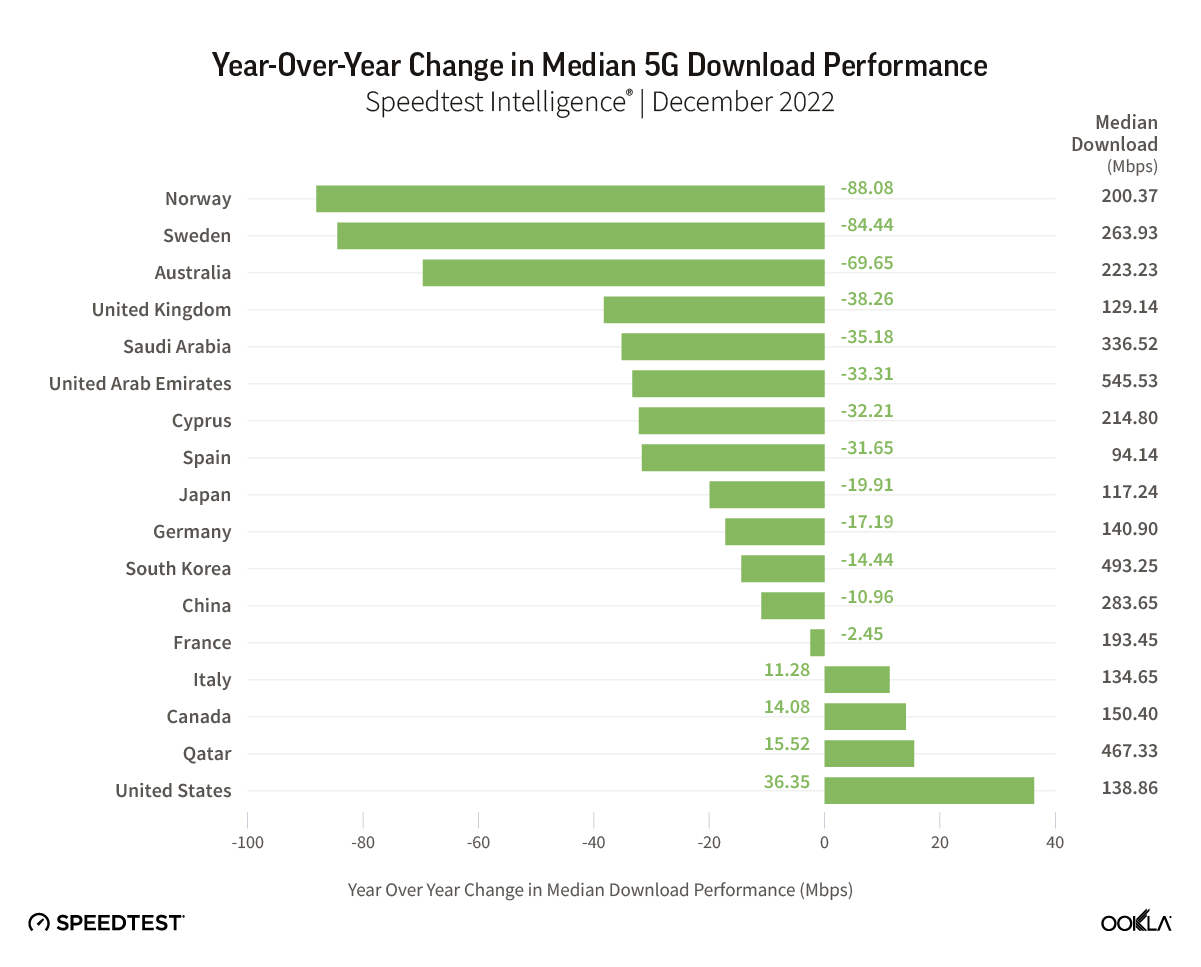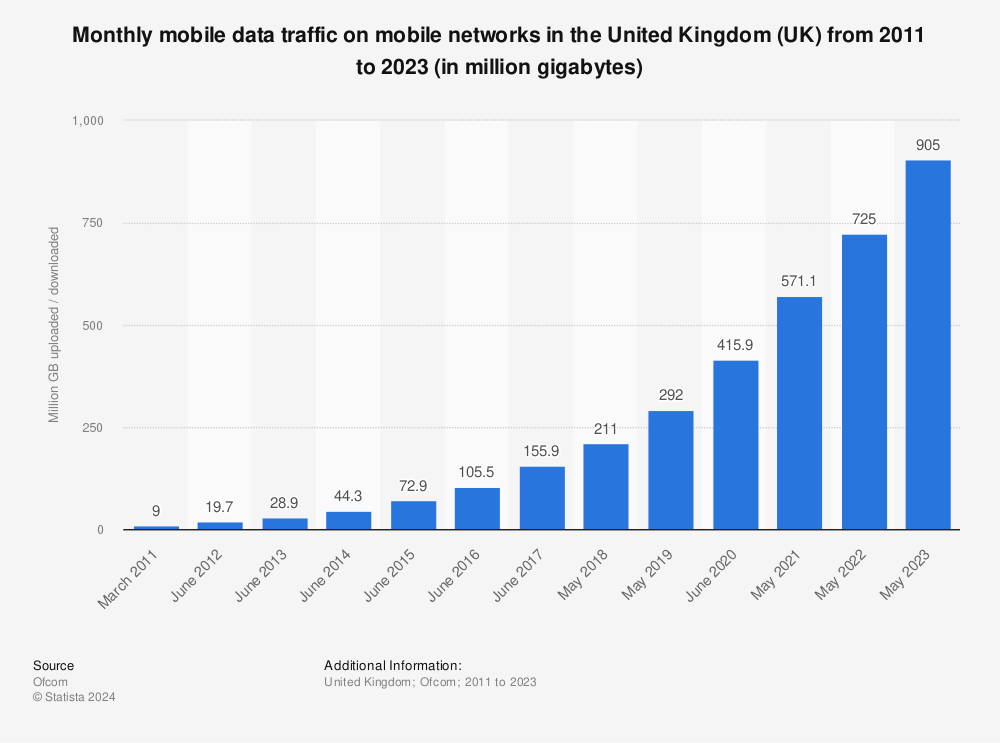Why is phone signal getting worse, and what can be done?

Recent user experiences indicate that phone signal quality is deteriorating, leading to dropped calls and slower data speeds. What factors are contributing to this decline, and how can telcos address these challenges?
There’s growing concern about the declining quality of mobile phone signal in many markets, leading to poor call performance, slow data speeds and dissatisfaction for customers – and significant challenges for mobile operators to overcome.
Am I being a nostalgia boomer or is phone signal just ... awful now? A significant number of places in London where such strenuous tasks as "searching google" will take a good 30 seconds on 4g
— Harry Robertson (@aitchrobertson) July 22, 2024
The CEO of Three has declared that the UK's signal quality is “abysmal” noting that the UK’s 5G networks rank 22nd out of 25 on speed and availability.
It’s not much different in the US, where Time told readers: “You’re Not Imagining It: Cell Phone Reception Is Getting Worse.”
Why is it, when we're more connected than ever, that we're struggling more and more with the basic building block of connectivity?
What's the difference between signal strength and quality?
There’s currently no agreed-upon unit of measurement for signal quality.
Signal strength refers to the power of the radio signal received by your device based on its proximity to the tower. Higher signal strength means a stronger, more powerful signal, which typically leads to clearer calls and faster data speeds.
On the other hand, signal quality refers to the integrity of the signal your device receives from the tower or small cell, influenced by factors like interference from other devices and physical obstructions.
Strength and quality aren’t exclusive, so it’s possible to have good signal strength but poor signal quality, and vice versa.
What’s making signal worse?
Increased network congestion
The most obvious issue affecting signal is increased congestion.
Mobile operators are not upgrading their infrastructure fast enough to keep up with the ever-growing number of devices and users, and networks are overloaded as data usage grows exponentially:
Mobile towers in the UK have far too many users trying to connect, as there simply aren’t enough of them, and a long-standing culture of NIMBYism is preventing more infrastructure from being built.
There are some indications that this attitude is changing though; over half of respondents to a survey by Mobile UK said that they would welcome or not be bothered by a tower on their street, even though 79% of respondents couldn’t actually identify a phone mast! Perhaps telcos are now getting better at hiding them?
Tourism and major public events can further complicate this, with influxes of people to an area for certain periods causing signal issues. Vodafone has taken to deploying mobile Cells-on-Wheels (COWs) to major events over the summer, temporarily increasing coverage at Cheltenham Races, Glastonbury, and the King’s Coronation. Meanwhile, EE has a more permanent 5G set-up at Wembley Stadium, which handled over 5TB of data in June during a Taylor Swift concert.
Mobile operators need to address this congestion through strategic network expansion and optimisation to maintain service quality.
Building materials
If you think that modern buildings are designed with connectivity in mind, then think again.
Though they may be well served by fibre, new buildings contain many materials which can inadvertently block mobile signals from entering, including metal, concrete and energy-efficient low-e glass. Repeaters can improve coverage inside, but they only work when there’s a strong enough signal to amplify.
And for users outside, tall buildings and cranes can block line-of-sight to towers, further weakening coverage.
Outdoor connectivity is the main focus for MNOs, as indoor settings are generally considered the domain of Wi-Fi, yet 36% of respondents to a YouGov survey said they regularly switched to mobile data to stay online when working from home due to router issues, slow speeds or network congestion. In fact, 45% of 18- to 24-year-olds said they use mobile data at home more than Wi-Fi, as unlimited data plans become the norm.
Understanding the impact of these materials and environments is crucial for planning the placement and range of towers to ensure consistent coverage.
Challenges of network technology upgrades
The transition to newer network technologies like 5G is designed to provide faster and more reliable services, but the frequency bands used by these technologies, while capable of transmitting data at high speeds, have a shorter range and are more susceptible to interference.
5G adoption across Europe currently lags behind the rest of the world. By 2025, Europe is expected to reach only 44% adoption rate, far behind South Korea at 73%, and Japan and the US at 68%.
The removal of Huawei equipment from 5G networks may have slowed down deployment, but it has also created new opportunities for networks built with Open RAN. The 5G supply chain is now open for alternative providers to connect their products with large players' systems and build customised deployments tailored to specific regional needs, improving overall signal quality, and fostering innovation through collaboration with diverse vendors.
As 5G adoption grows, it places more strain on the new networks, degrading signal quality as network densification struggles to keep up. This also explains why many users aren’t finding 5G to be faster than 4G, even in countries with high adoption rates.

Currently, 5G typically operates within the 3-4 GHz range, known as the mid-band spectrum, whilst the mmWave 5G operates at 26 GHz and above. These frequencies are much higher than previous generations, meaning they have a shorter range and require a greater density of cells.
Mobile operators must therefore carefully manage the deployment of 5G and other new technologies to ensure compatibility with existing infrastructure and devices, and minimise further disruption.
Infrastructure limitations
Telecom operators often face limitations in their infrastructure, particularly in rural and remote areas. While urban regions may benefit from a high-density network of towers, rural areas have fewer towers, spread out over greater distances.
For some small communities, a fault with a single mast can cut off entire villages or towns; one town in the Outer Hebrides was unable to make calls or go online for five weeks in 2022 due to a network fault, hampered by its remote location and bad weather.
The UK’s Shared Rural Network, a joint venture by the big four mobile networks and Government, is increasing 4G coverage from a pre-SRN rate of 66% across the UK to 95% by pooling resources and infrastructure. Through sharing masts and other facilities, coverage can be extended to areas that might not be economically viable to serve independently.
Operators need to balance their investments to ensure adequate coverage across all regions, including those that may be less profitable.
How can telcos improve signal?
To address deteriorating signal quality, mobile operators must adopt a proactive and strategic approach to enhance signal quality and customer satisfaction:
- Expand existing infrastructure
To manage increased network congestion, telcos should expand their infrastructure, adding more towers, and deploying small cells to improve coverage in challenging environments. Additionally, optimising existing infrastructure through better resource management can improve signal quality and alleviate congestion at peak times. - Invest in new technologies
As new technologies like 5G continue to roll out, telcos must ensure that their deployment strategies keep interference to a minimum. Network slicing, for example, can create dedicated channels for critical communications, reducing the impact of interference from other services, while Dynamic Spectrum Sharing (DSS) enables dynamic allocation of both 4G and 5G simultaneously, instead of dedicating specific portions of the spectrum to each network type. - Artificial intelligence
AI has a significant role to play in improving signal quality, predicting traffic patterns and user behaviour so that network resources can be allocated in real-time to optimise signal distribution and strength. AI can monitor extant networks for signs of potential failures or degradation, predicting when and where maintenance is needed to ensure consistent signal quality, or even plan future networks by analysing geographical and usage data to determine where additional capacity is needed. - Enhance coverage in rural and remote areas
Expanding coverage in underserved areas through the deployment of additional cell towers and leveraging alternative technologies such as satellite or drones to ensure that all customers receive a reliable service. - Optimise data
Use efficient data compression algorithms to reduce the size of the data being transmitted, thus requiring less bandwidth, or process more data at the edge of the network to minimise the amount of data that needs to be transmitted, reducing latency. For example, Vodafone and Meta have recently partnered to optimise short-form video for streaming.
We’re used to low latency, high-speed connections, but sharing bandwidth between more people doing more stuff is squeezing network capacity like never before. It may be that, as phones become more integrated into our lives, consumers will become much more aware of when they don’t have signal.
The challenge of worsening mobile phone signal quality is a complex issue with many contributing factors. To meet the growing requirements of mobile networks, CSPs must expand and optimise existing network infrastructure to improve signal quality and customer satisfaction, while exploring new approaches to network architectures such as AI-powered monitoring and infrastructure sharing.
Update [26/09/2024]: According to a new report by Opensignal, 5G availability in the UK has reportedly fallen compared to this time last year.

